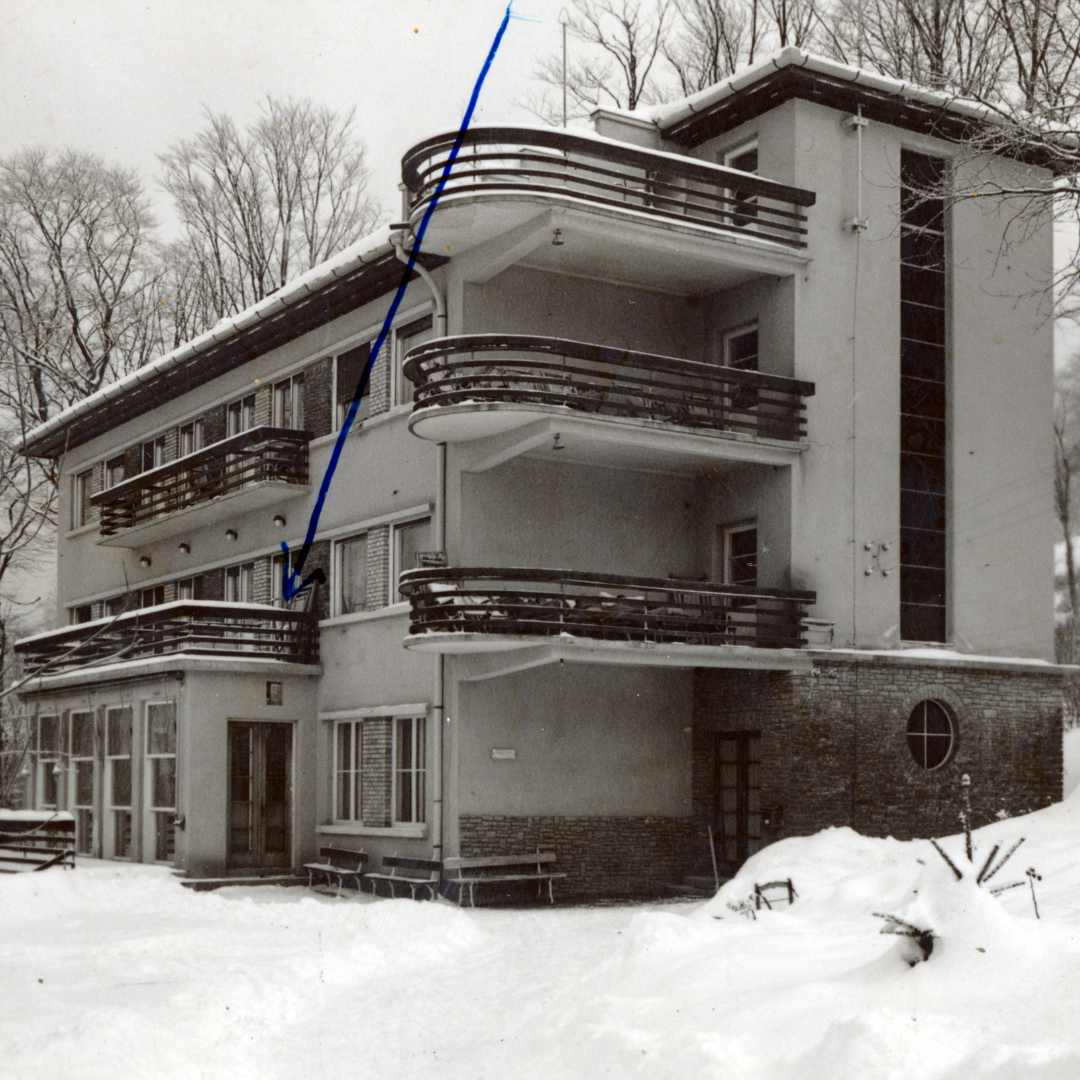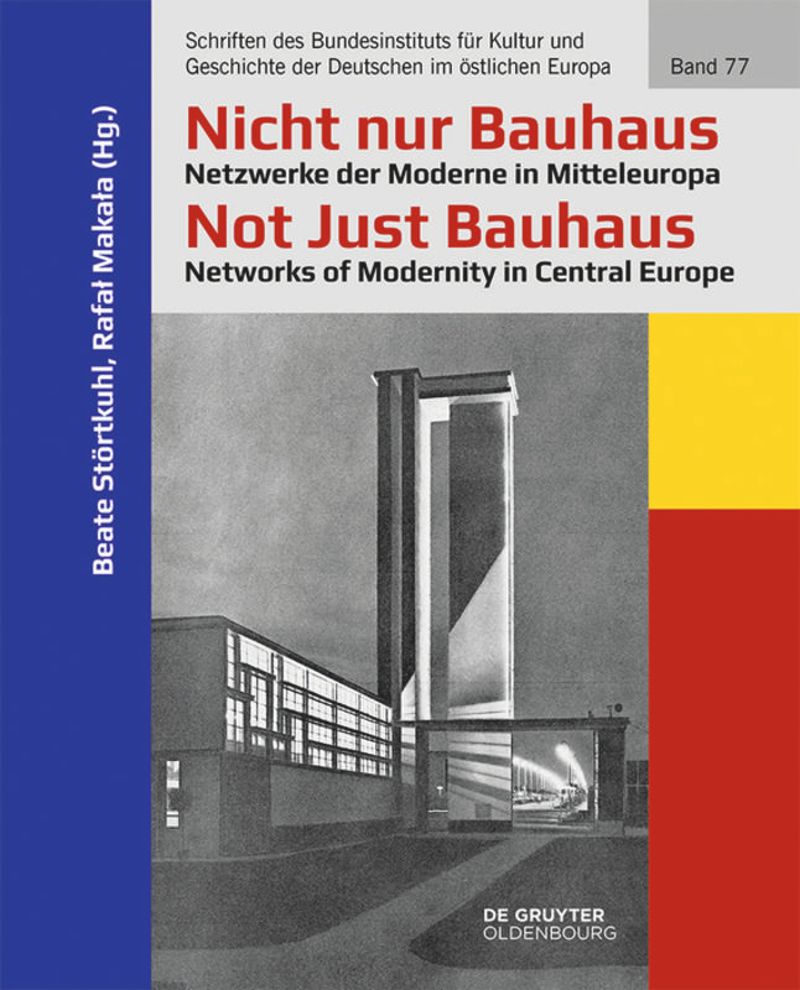Challenging the Bauhaus myth
 Fortepan/Album082
Fortepan/Album082 
Published by: De Gruyter Oldenbourg
 Fortepan/Album082
Fortepan/Album082 The Bauhaus is somewhat of a phenomenon. With its distinct appetite for experimentation and innovation, it has stood the test of time. A synthesis of philosophy and aesthetics, the movement has impacted artistic methods and ideas globally. Founded in Weimar by Walter Gropius in 1919, the Bauhaus was “the new structure of the future”. Ironically, it only lasted fourteen years. Yet, this was enough time for it to capture the imagination of artists and society alike. Fast forward to 2019, German cities hosted an elaborate series of exhibitions to celebrate the centenary of the movement. This was also, however, an opportunity to challenge “the Bauhaus myth” and unpack its rather sanctified historiographical discussion. Its position on the pedestal of architectural modernism has led to a focus on modern architecture that seemingly emanates from Germany. This brings us to the book Nicht nur Bauhaus/Not Just Bauhaus – a collection of seventeen contributions which recalibrates the established narrative on architectural modernism that undergirds the Bauhaus movement. In unpacking and explaining the networks of architectural modernism in Central and Eastern Europe, the book pulls Bauhaus from its pedestal, confronts the vexed concept of “Bauhaus style”, and brings to the forefront ideas of modernism that originated in the region. This book foregrounds the pioneering modernist discourse rife in Central and Eastern European cities beyond Weimar.
Building on a conference organized by the Silesian Museum in Görlitz and the Architectural Museum in Wroclaw, the book offers an impressive selection of ideas, illustrations, and methodologies that revise the way we think about modern architecture in the region. In an effort to tie together the contributions with a theoretical thread, editors Beate Störtkuhl and Rafał Makała draw on Bruno Latour’s actor-network theory and the reflexively comparative methodology of histoire croisée. Thus, the contributions aim to recalibrate the established view on Central and Eastern Europe’s position in the international avantgarde, which is so often reduced to western modernity – and more often the Bauhaus.
Divided into four sections, the book opens with “Scholarly Entanglements” before moving onto “Transnational Networks”, “New States – New Architecture”, and concluding with “The Longue Durée of the Avantgarde”. For a publication to spark a dialogue between an assemblage of contributions, themes need to tease out the string of ideas emphasized in the introduction and woven through the collection. That way, there is a thread to be followed by the readers. The book’s inchoate thematic breakdown is perhaps its first shortcoming. This is further complicated with contributions being in either German or English. Theoretically, a bilingual publication allows for a wider audience to engage with the work. By the same token, however, moving between languages makes it difficult to follow certain ideas and hinders the dialogue between the contributions. A translation into both languages would rectify this issue. That said, it must be noted that the contributions are remarkably diverse and synthesize a rich selection of historically and linguistically varied sources. An extended bibliography organized thematically would have been valuable in collating the multilingual sources in the publication. And now more than ever, it would be a useful point of reference for scholars building on the ideas put forward by book: why not have future research in conversation with current research?
The first section takes us mostly to Germany. Stephanie Fink and Vladimír Šlapeta shed light on the artistic training that took place at the Technical University of Berlin-Charlottenburg and the Royal School of Arts and Crafts in Wroclaw respectively. Established prior to the Bauhaus school, both contributions emphasize institutions’ ideas of architectural modernism that preceded – and influenced – the Bauhaus. “The Bauhaus was not a solitaire” (p. 93), remarks Alexandra Panzert. In her text, she considers art schools in the Weimar Republic that experimented with and exchanged new ideas. Aside from rediscovering other art schools, she decenters the Bauhaus and suggests that its lasting impact lies in its post-war accolade. Beáta Hock offers a study of the Bauhaus as the “laboratory of modernity and springboard to the world” with a focus on Jewish and female students of the Bauhaus from Eastern Europe who disseminated the school’s ideas upon their return. By recovering the female protagonists of the Bauhaus, Hock reveals the sexual politics of the school. Despite this text’s focus on the Bauhaus, it is an impressive contribution that brings the center and periphery into conversation. In the final contribution of the section, Małgorzata Jędrzejczyk explores the role of individuals in the transfer of ideas. Using the work of Katarzyna Kobro and her husband Władysław Strzemiński, she discusses the traces of the Bauhaus in interwar Polish art, with its parallels and distinctions.
Despite the political frisson caused by the fall of the old imperial orders, the movement across borders, international exhibitions, and cooperation between institutions fostered networks which propagated old and new ideas.
Transnational networks are the focus of the second section, which effectively brings into conversation the different contributions. Carolin Binder highlights the Czechoslovak artistic association, Devětsil, and its connection to the Bauhaus. Of particular importance is the relationship between Karel Teige and the Bauhaus directors – Gropius and later Hannes Meyer. Remaining in Czechoslovakia, Christopher Long looks at Czech assistants to Adolf Loos and the reception and development of ideas in architectural modernism. Like Binder, who also focuses on publications by Devětsil, Ágnes Anna Sebestyén considers media as network with the architectural magazine Tér és Forma, whose multilingual articles garnered notable international interest. Martin Kohlrausch, on the other hand, explores the establishment of CIAM Ost and the opportunities presented to them with CIAM’s universalist and internationalist agenda during a period of political volatility.
Despite the political frisson caused by the fall of the old imperial orders, the movement across borders, international exhibitions, and cooperation between institutions fostered networks which propagated old and new ideas. These all played an important role in establishing modern architecture that was reflective of the new nation states after 1918, including Lithuania, Estonia, the Second Polish Republic, and Czechoslovakia. Giedrė Jankevičiūtė observes how architectural modernism helped “Lithuanian cities to maintain their strong sense of non-Soviet identity” (p. 256), while Andrzej Szczerski opines that, “modernity became an integral part of Polish identity’ and ‘triggered a dynamic change within Polish culture” (p. 299).
The contributions in the final section, although eclectic and not in conversation with one another per se, are some of the most interesting reads in the entire compilation. To demonstrate that houses prefabricated in the factory did not originate in the Bauhaus, Kai Wenzel discusses the cooperation of architects with the company Christoph and Umack in developing new building principles, before discussing how these ideas were transferred to the Unites States by Konrad Wachsmann. A highlight of the publication is Tzafrir Fainholtz’s text which traces the Central European architectural modernism underneath the Mediterranean sun in Haifa following the arrival of Jewish immigrants fleeing persecution in Germany in the 1930s and 1940s. The contributions in the final section reflect the many themes entertained throughout the publication and provide a little more coherence to the kaleidoscopic thematic diversity of the compilation overall.
One would hope given its title that the Bauhaus would be more implicit in the discussions of architectural modernism. That said, these texts mark an important starting point in reconsidering the role of actors, institutions, and networks in interwar Central and Eastern Europe. Thus, the most important contribution made by Nicht nur Bauhaus/Not Just Bauhaus lies in its basic premise: that the story of architectural modernism is one of exchange and evolution that is not limited to the Bauhaus.
Jana Hunter is a PhD candidate in History at the University of Oxford. She is a cultural historian of Central and Eastern Europe and her PhD thesis explores the relationship between experiences of travel and perceptions of time in Bohemia during the late nineteenth and early twentieth centuries. The aim of her research is to reveal the political, social, and cultural networks that emerged through travel, which situate Bohemia as an interface between the regions of Habsburg Central Europe, but also between Europe and the globe.

Nicht nur Bauhaus: Netzwerke der Moderne in Mitteleuropa Weitere/Not Just Bauhaus: Networks of Modernity in Central Europe
Published by: De Gruyter Oldenbourg
